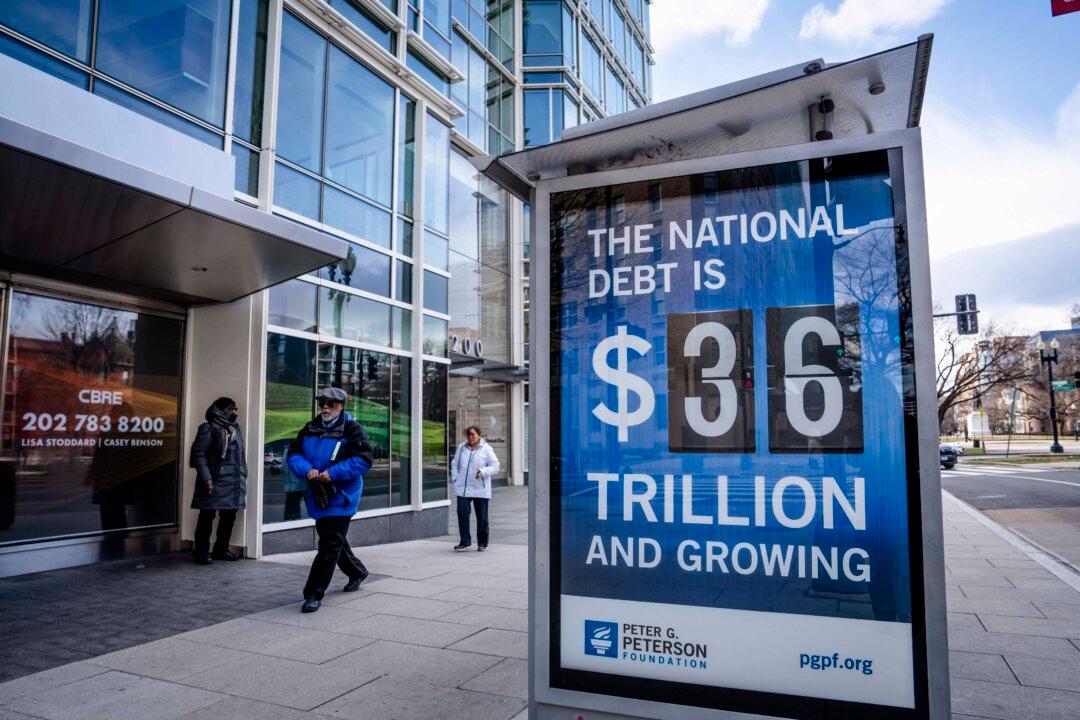The U.S. annual inflation was 8.5 percent in July, down from 9.1 percent in June, according to the
Bureau of Labor Statistics. The market had anticipated a reading of 8.7 percent.
The core inflation rate, which excludes the volatile food and energy sectors, stayed unchanged at 5.9 percent last month. Economists had expected core inflation to rise to 6.1 percent.
On a monthly basis, the consumer price index (CPI) was flat, and the core CPI edged up 0.3 percent.
Despite the notable decline in the headline print, everything is more costly than a year ago, as inflation remained at a 40-year high. Food prices advanced 10.9 percent, energy prices climbed 32.9 percent, new vehicles rose 10.4 percent, used cars and trucks jumped 6.6 percent, and apparel rose 5.1 percent.
The shelter index also rose 5.7 percent, while medical care and transportation services picked up 5.1 percent and 9.2 percent, respectively.
The drop came on the energy front, with gasoline sliding 7.7 percent month-over-month and fuel oil declining 11 percent from June to July. However, even with the substantial decline in energy prices, they were significantly high year-over-year.
The cost of food remained significantly high in July compared to a year ago, with ground beef up 9.7 percent, chicken up 16.6 percent, and ham up 9.2 percent. Other kitchen staples also advanced, such as eggs (38 percent), milk (15.6 percent), bread (13.7 percent), coffee (20.3 percent), and butter (22.2 percent).
E.J. Antoni, a research fellow at The Heritage Foundation, says the July inflation report is far from optimistic.
“Energy prices dropped slightly in July as consumer demand collapsed from record prices in June, but the cold reality is that whether the rate is 8.5% or 9.1%, Americans are feeling historic pain whenever they buy gas, groceries, or other staples—and we’re still moving in the wrong direction,” he said in an email.
For some market observers, the concern is that the CPI is sticky and will remain elevated for longer than expected, says Giuseppe Sette, co-founder and president of the investment research firm Toggle AI.
“If you imagine 5 percent as a sticky anchor for inflation, then it will be reasonable to expect short term rates to get closer to 5 percent during next year,” he said in a note. “Now whether the economy can take it is a different story. We’ll certainly face stress in the credit system with higher rates and Quantitative Tightening.”
U.S. financial markets rose on the news, with the Dow Jones Industrial Average rising 535.10, or about 1.6 percent. The Nasdaq Composite index climbed 360.88, or almost 2.9 percent, while the S&P 500 jumped about 2.1 percent.
Investors believe that the lower-than-expected headline reading might force the Federal Reserve to pivot on interest rates and proceed to slow the pace of rate increases.
Inflation Fueling Recession Fears
Inflation continues to be consumers’ chief concern in the current economy.The IBD/TIPP Economic Optimism Index in the United States slipped to an 11-year low of 38.1 in August, from 38.5 in July. Consumers remained pessimistic about the economy, based on inflation canceling wage gains.
“With more Americans believing we’re in a recession than in months past, federal policies are the thorn in their sides,” Raghavan Mayur, president of TechnoMetrica, which conducted the poll, said in a
statement. “The economy is a top issue for 56% of people, and inflation continues to be troublesome to the majority of Americans.”
However, the Federal Reserve Bank of New York’s
Survey of Consumer Expectations found that median 1- and 3-year inflation expectations declined in July to 6.2 percent and 3.2 percent, respectively.
That said, negative sentiment was similar for companies, too. While the National Federation of Independent Business (NFIB) Optimism Index
inched higher to 89.9 percent in July, which was still close to a decade low, the report noted that 37 percent of small-business owners listed inflation as their most important problem.
“The uncertainty in the small business sector is climbing again as owners continue to manage historic inflation, labor shortages, and supply chain disruptions,” William Dunkelberg, NFIB’s chief economist, said in a statement. “As we move into the second half of 2022, owners will continue to manage their businesses into a very uncertain future.”
Elevated inflation continues to add to growing recession fears. A recent Allianz Life Insurance Company of North America
survey found that 66 percent of Americans are concerned that a significant recession is on the horizon, citing high inflation that will harm purchasing power over the next six months.
The poll also revealed that 82 percent of respondents believe inflation will worsen over the next 12 months. Plus, 71 percent noted that their wages aren’t keeping pace with growing expenses.
“Rising costs on necessities like food and gas are hitting Americans’ bank accounts,” Kelly LaVigne, vice president of advanced market and solutions at Allianz Life, said. “Some might have dipped into their savings to cover those initial increases in the short term. But, as this drags on, the worry about how increasing inflation will affect purchasing power and saving in the long term is increasing.”
Meanwhile, the U.S. economy met the definition of a technical recession, recording two consecutive quarters of negative gross domestic product growth.
What About the Federal Reserve?
The consensus among officials at the Federal Reserve is that the central bank will lift the benchmark fed funds rate and keep it intact until inflation pressures ease. But the Federal Open Market Committee’s (FOMC) voting members echoed Federal Reserve Chair Jerome Powell’s view that all policy moves will depend on the data.Meanwhile, San Francisco Federal Reserve Bank President Mary Daly, who isn’t currently a voting member,
told Reuters earlier this month that the institution would start with the idea of a 50-basis-point increase at the September meeting. However, if price inflation has yet to show signs of coming down at a notable pace, a three-quarter-point boost would be appropriate.
Citigroup strategists led by Andrew Hollenhorst think that a full-point increase is feasible following the red-hot July jobs report that saw 528,000 jobs returned to the national economy.
“Our base case remains for a 75 basis-point hike in September, but we would not be too surprised by a 100 basis-point hike if core inflation comes in stronger than expected,” Hollenhorst
wrote.
The drop in the CPI “could cause the Fed to be less aggressive on a September increase,” Shmuel Shayowitz, president and chief lending officer at Approved Funding, told The Epoch Times.
According to the
CME Group FedWatch Tool, the financial markets are overwhelmingly anticipating a three-quarter-point hike. That would raise the target rate to 3 percent to 3.25 percent.
The FOMC’s next policy meeting is scheduled for Sept. 20–21.





